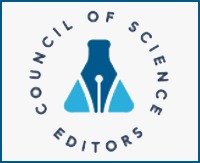Comparative efficacy of different approaches to metaphylaxis of recurrent urinary tract infections
DOI:
https://doi.org/10.22141/2307-1257.7.4.2018.148513Keywords:
urinary tract infections, recurrent cystitis, recurrent urinary tract infections, cystitis, fosfomycin, goldenrod, solidago virgaurea, prevention of cystitis, metaphylaxis of urinary infections, Cysto-Aurin, Espa-FocinAbstract
An open-label comparative prospective study of the clinical and laboratory efficacy and safety of Espa-Focin (fosfomycin trometamol) and Cysto-Aurin (goldenrod preparation) manufactured by Еsparma GmbH was performed in 126 female patients with recurrent urinary tract infections (reUTI), who were randomized into four statistically homogeneous groups. During the treatment, patients of all groups used the strategy of behavioral therapy and post-coital prophylaxis. Patients of group A (n = 32) also received Cysto-Aurin 1 tablet qid, in courses of 15 days each month for 6 months, group B (n = 34) — the same drug 2 tablets bid in courses of 15 days each month for 6 months, groups D (n = 30) — Espa-Focin 3 g once every 10 days for 6 months, patients of the comparison group C (n = 30) did not received any special therapy. Treatment efficacy was evaluated within 12 months from the start of the study, with follow-up visits in 15 days, 3, 6, 9 and 12 months from randomization. During the study, a pool of objective data was obtained, indicating a significant decrease in the number of reUTI within 6 months of treatment in patients of clinical groups, as well as during a prospective 6-month period. According to the scale of productivity, a positive clinical effect was observed in 83.3 % of Cysto-Aurin patients, in 93.3 % of persons in Espa-Focin group, and also in 20 % of the comparison group. In the active phase of treatment, anti-relapse efficacy was significantly higher among patients of group D, where the reduction in the number of relapses during the first three months of treatment was 86.8 % and the achieved rate (0.07 ± 0.09 relapses for 3 months) remained unchanged until the end of the drug administration. The corresponding dynamics in groups A and B was lower — 69.2 and 60 % for 3 months and 92.3 and 73.3 % for 6 months; in patients of the comparison group, these figures were 21.4 and 7.1 %, respectively. A significant decrease in leukocyturia in patients of clinical groups was achieved after 15 days of taking the drug, by 57.9 % in group D and by 33.9 and 27.5 % in groups A and B, and during the entire period of treatment — by 78.1, 73.4 and 44.6 %, i.e. 4.6, 3.7 and 1.8 times lower than baseline values, respectively. In the prospective follow-up period, in patients of group A and B, the level of leukocyturia remained significantly lower than the baseline values — by 49.2 and 34.2 % (p < 0.01), while among patients of the fosfomycin group, it almost returned to baseline values. The dynamics of bacteriuria and pyuria in group D was characterized by a significantly higher rate and amplitude of manifestation of peak efficacy of antibacterial activity, but faster reversion of clinical and laboratory results, compared with similar indicators after Cysto-Aurin intake. The amplitude and rate of elimination of clinical symptoms on UTISA questionnaire among patients taking Espa-Focin was significantly higher than among patients using goldenrod (ΔM = 58.15 versus 41.2 %), however, with an equally progressive reversion of reUTI clinical manifestations after discontinuation of treatment. The slower dynamics of clinical efficacy in groups A and B was combined with the moderate inversion of symptoms of the pathology. According to the amplitude of clinical efficacy, in case of reUTI, the efficacy of intermittent administration of Cysto-Aurin is comparable with that of fosfomycin. The rate of increase of the clinical effectiveness during therapy with goldenrod is 1.5 times slower, the strength of manifestations is 24.7 % lower, whereas the duration of the action after discontinuation is 1.45 times higher compared to antibiotic therapy. An increase in the frequency of Cysto-Aurin administration (per day) provides a higher clinical result with a constant duration of the effect. Comparative integral efficiency of different modes of intermittent therapy, according to key indicators of clinical, laboratory data and quality of life, allows us recommending the administration of Espa-Focin for reUTI, which is accompanied by an aggressive course, high bacteriuria and leukocyturia, a combination of different uropathogens in culture. Intermittent administration of Cysto-Aurin has priority in case of moderate bacteriuria, the necessity for a prolonged duration of anti-relapse treatment in patients with significant induction of fungal activity and reUTI associated with the persistence of C.albicans, local and systemic manifestations of dysbiosis.Downloads
References
Grabe M., Bartoletti R., Bjerklund-Johansen T.E. et al. European Association of Urology: Guidelines on Urological Infections, 2015.
Dason S., Dason J.T., Kapoor A. Guidelines for the diagnosis and management of recurrent urinary tract infection in women // Can. Urol. Assoc. J. — 2011. — 5. — Р. 316-322.
Grimes C.L., Lukacz E.S. Urinary tract infections // Female Pelvic. Med. Reconstr. Surg. — 2011. — 17. — Р. 272-278.
Matthew G., Cristiano G. Moreira, Sperandio Vanessa, Zimmern Philippe. Recurrent urinary tract infections in healthy and nonpregnant women // Urological Science. — 2014. — Vol. 25, Is. 1. — P. 1-8.
Ejrnæs K. Bacterial characteristics of importance for recurrent urinary tract infections caused by Escherichia coli // Dan. Med. Bull. — 2011. — 58. — Р. B4187.
Foxman B. Urinary tract infection syndromes: occurrence, recurrence, bacteriology, risk factors, and disease burden // Infect. Dis. Clin. North Am. — 2014. — 28. — Р. 1-13.
Foxman B., Barlow R., D'Arcy H., Gillespie B., Sobel J.D. Urinary tract infection: self-reported incidence and associated costs // Ann. Epidemiol. — 2000. — 10. — Р. 509-515.
European Goldenrod // Herbal Medicines. — 4th edition. — 2013. — 928 p.
Melzig M.F. Goldenrod-a classical exponent in the urological phytotherapy // Wien Med. Wochenschr. — 2004. — 154 (21–22). — Р. 523-7.
Dwyer P.L., O'Reilly M. Recurrent urinary tract infection in the female // Curr. Opin. Obstet. Gynecol.. — 2002. — 14. — Р. 537-543.
Flores-Mireles, Ana L. et al. Urinary Tract Infections: Epidemiology, Mechanisms of Infection and Treatment Options // Nature reviews. Microbiology. — 2015. — 13 (5). — Р. 269-284. PMC. Web. 9 Jan. 2018.
Schappert S.M., Rechtsteiner E.A. Ambulatory medical care utilization estimates for 2007 // Vital. Health Stat. — 2011. — 13. — Р. 1-38.
Griebling T.L. Urologic diseases in America project: trends in resource use for urinary tract infections in women // J. Urol. — 2005. — 173. — Р. 1281-1287.
Van der Starre W.E., van Nieuwkoop C., Paltansing S., van't Wout J.W., Groeneveld G.H., Becker M.J. et al. Risk factors for fluoroquinolone-resistant Escherichia coli in adults with community-onset febrile urinary tract infection // J. Antimicrob. Chemother. — 2011. — 66. — Р. 650-656.
Assessment report on Soidago virgaurea L. herba // European Medicines Agency. — 2008.
Kołodziej B., Kowalski K., Kędzia B. Antibacterial and antimutagenic activity of extracts aboveground parts of three Solidago species: Solidago virgaurea L., Solidago canadensis L. and Solidago gigantea Ait // Journal of Medicinal Plants Research. — 2011. — Vol. 5, № 31. — P. 6770-6779.
Laurençon L., Sarrazin E., Chevalier M., Prêcheur I., Herbette G., Fernandez X. Triterpenoid saponins from the aerial parts of Solidago virgaurea alpestris with inhibiting activity of Candida albicans yeast-hyphal conversion // Phytochemistry. — 2013. — Vol. 86. — Р. 103-111.
Courtney M. Starks, Russell B. Williams, Matt G. Goering, Mark O’Neil-Johnson, Vanessa L. Norman, Jin-Feng Hu, Eliane Garo, Grayson W. Hough, Stephanie M. Rice, Gary R. Eldridge. Antibacterial clerodane diterpenes from Goldenrod (Solidago virgaurea) // Phytochemistry. — 2010. — Vol. 71, Is. 1. — Р. 104-109.
Brantner A. The antimicrobial activity of Solidago-containing phytourologica // Drogen-report. — 1999. — V. 12. — P. 27-28.
Echtes Goldenrutenkraut als entzündungshemmende Droge / Melzig M.F., Löser B., Bader G., Papsdorf G. // Z. Phytother. — 2000. — Vol. 21. — P. 67-70.
Clayson D., Wild D., Doll H., Keating K., Gondek K. Validation of a patient-administered questionnaire to measure the severity and bothersomeness of lower urinary tract symptoms in uncomplicated urinary tract infection (UTI): the UTI Symptom Assessment questionnaire // BJU Int. — 2005. — 96 (3). — Р. 350-9.
Sardar A., Basireddy S.R., Navaz A. et al. Comparative evaluation of fosfomycin activity with other antimicrobial agents against E.coli isolates from urinary tract infections // J. Clin. Diagn. Res. — 2017. — 11 (2). — DC26-DC29.
Шостак М.В., Костев Ф.И., Лукинюк Е.И. Эффективное лечение и профилактика часто рецидивирующих инфекций мочевых путей действием препарата золотарника обыкновенного (Solidago virgaurea) Цисто-аурин // Почки. — 2018. — № 3.
Downloads
Published
How to Cite
Issue
Section
License
Copyright (c) 2018 M.V. Shostak, F.I. Kostyev, E.I. Lukinyuk

This work is licensed under a Creative Commons Attribution 4.0 International License.

 ISSN
ISSN  ISSN
ISSN 


























